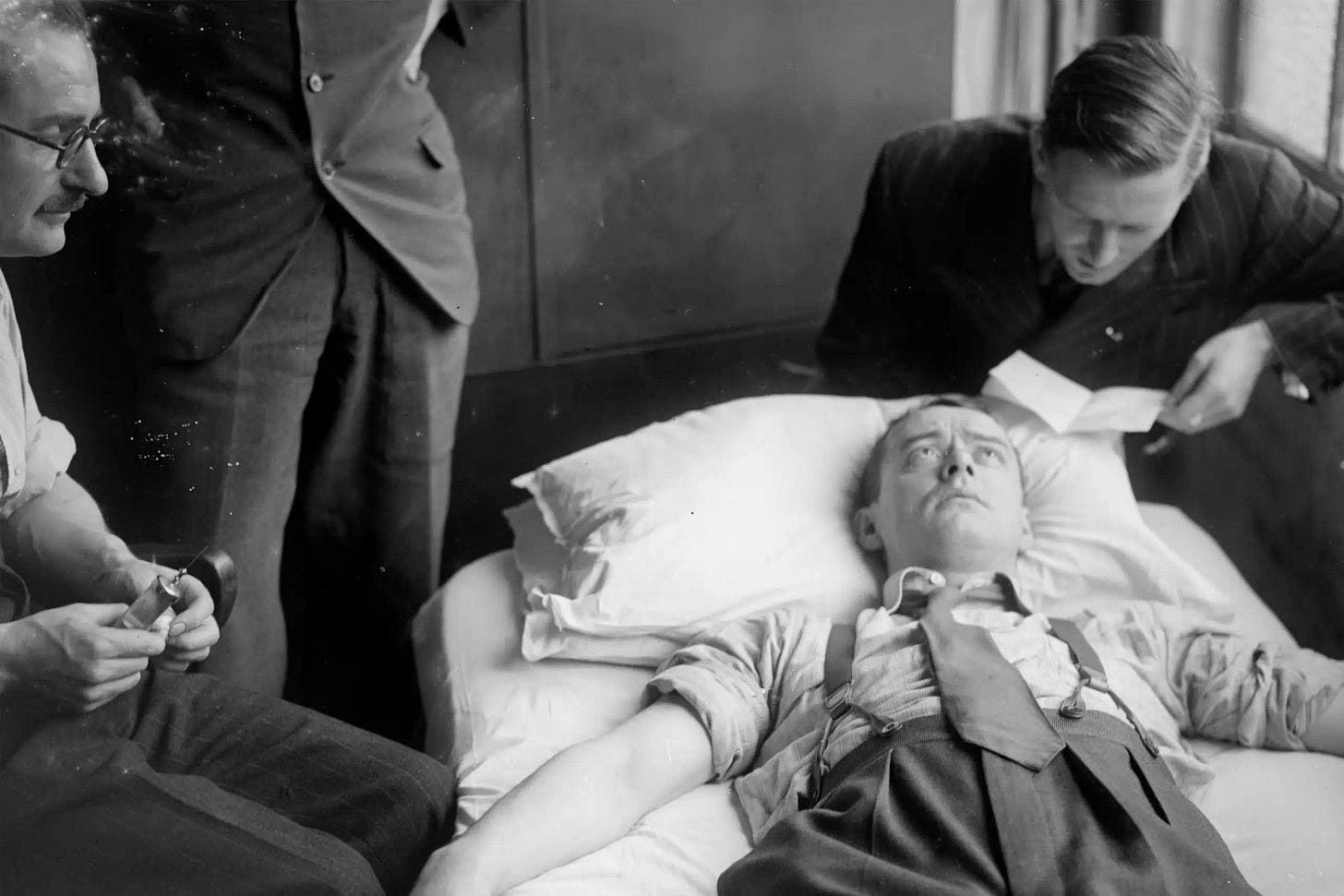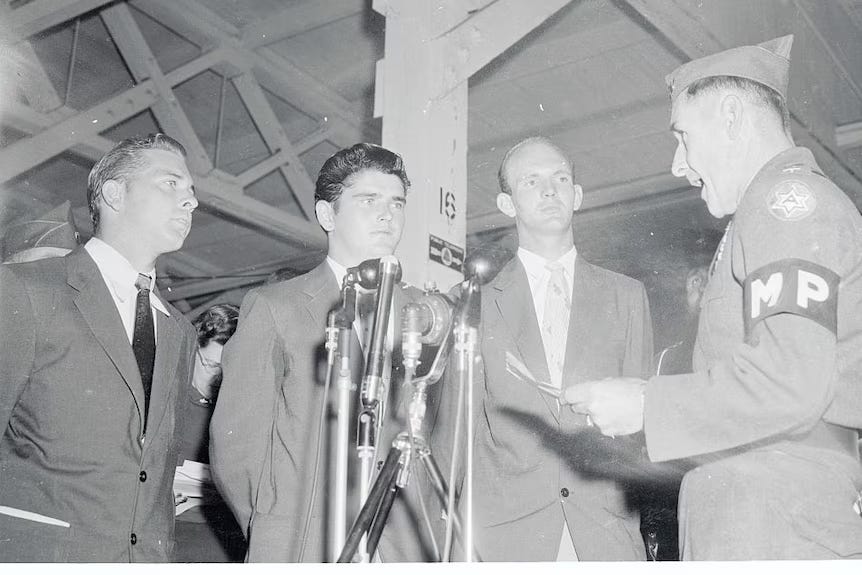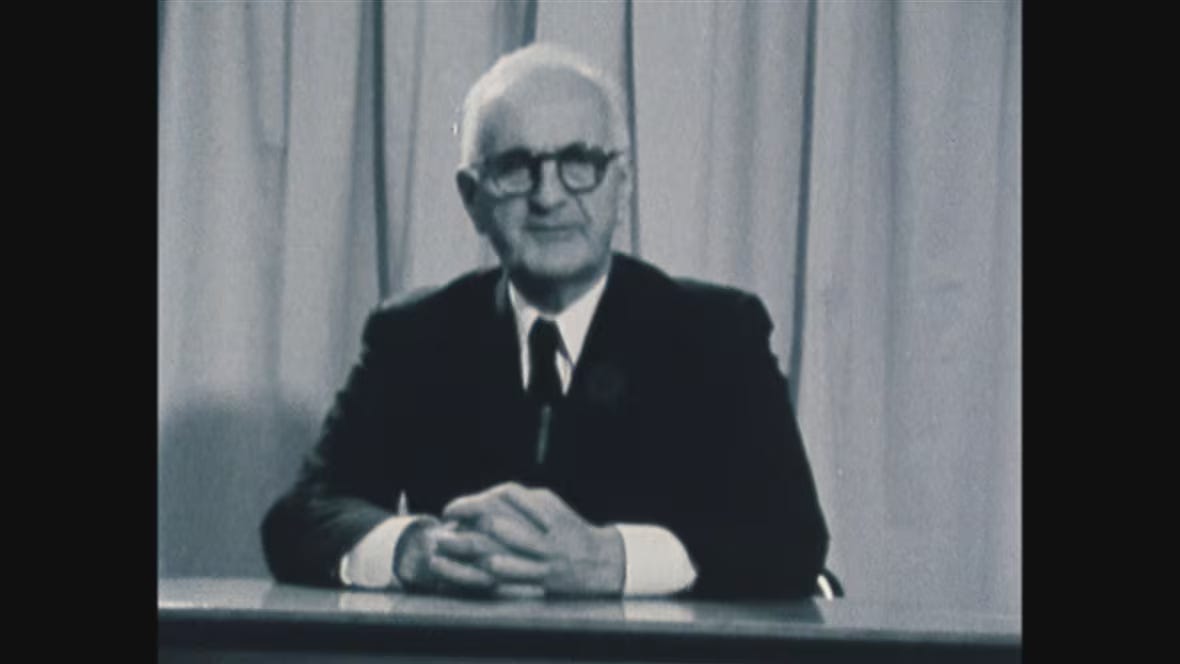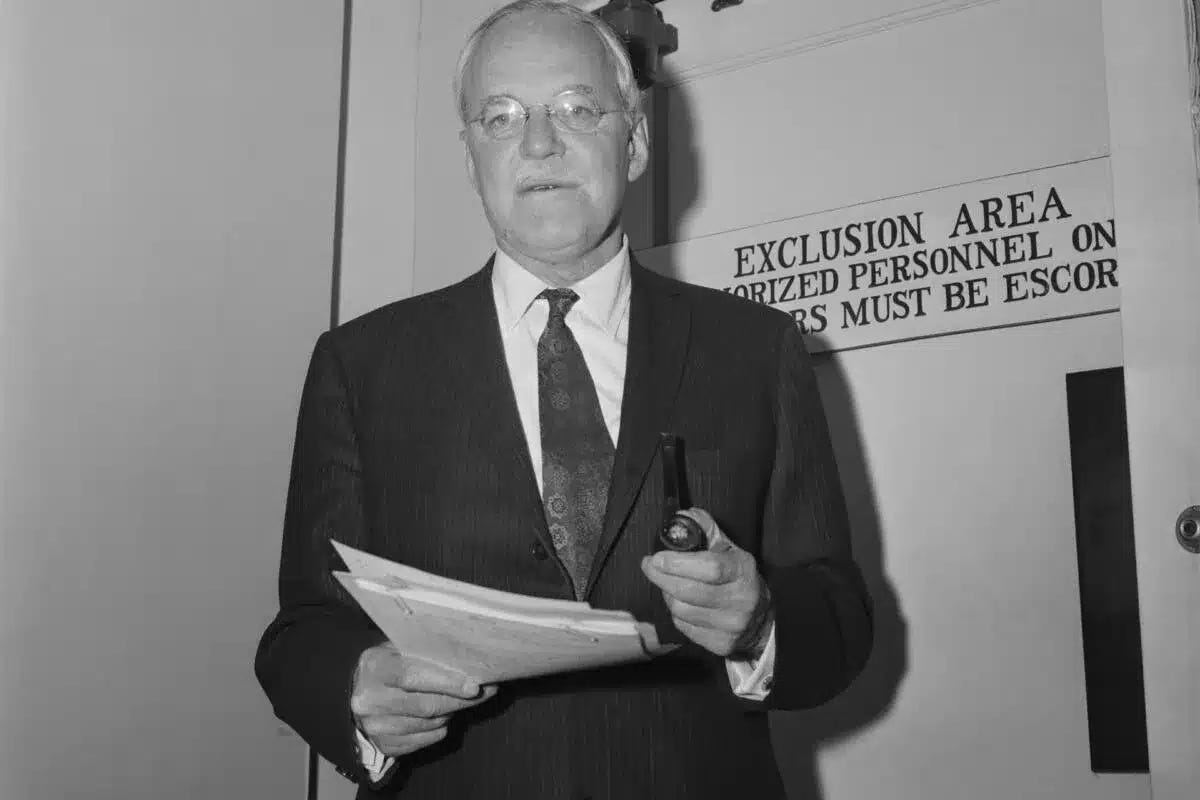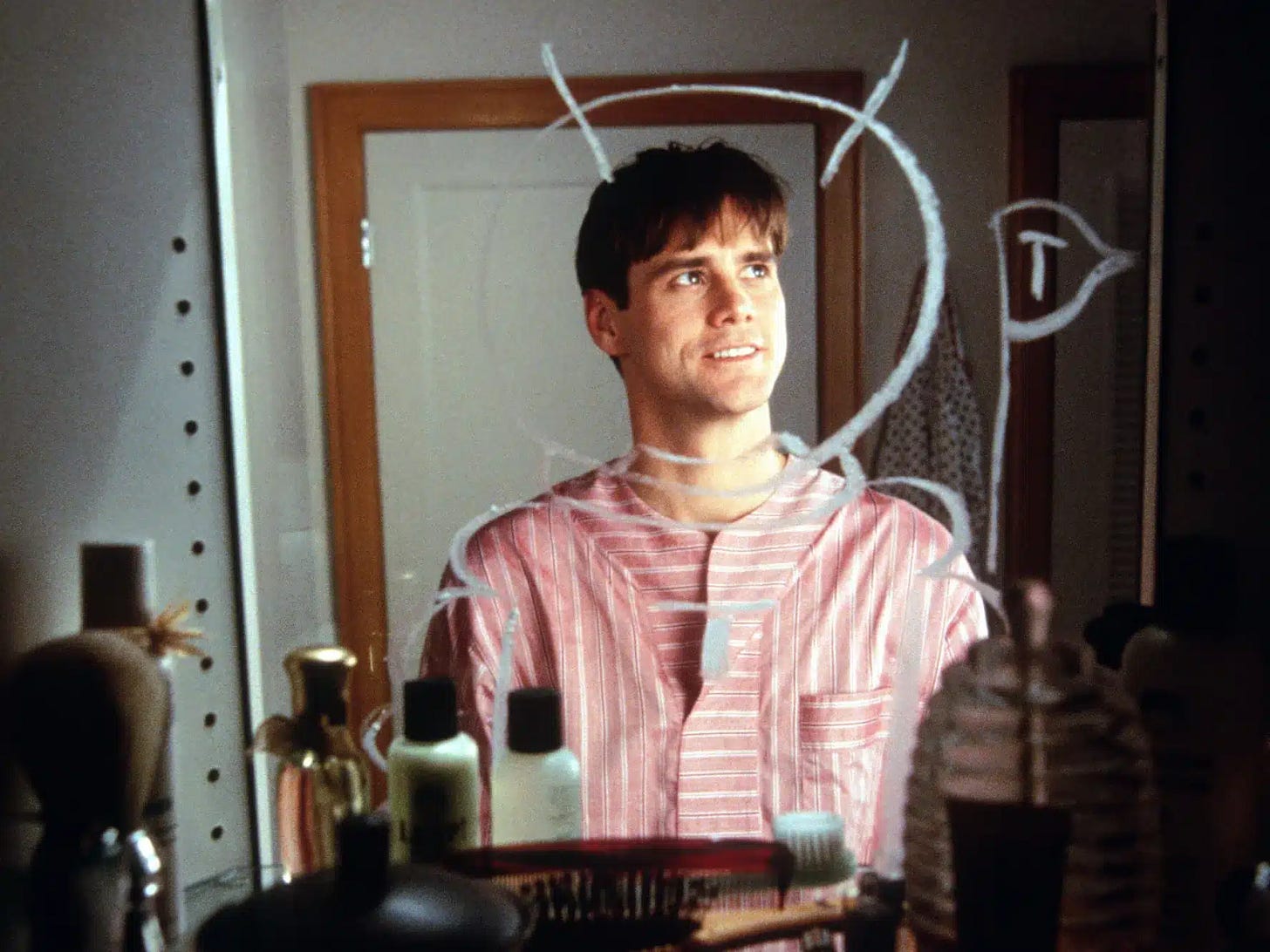A gutted rat hiding a secret message. A pigeon fitted with a primitive camera strapped to its chest. These may seem like scenes from a vintage spy thriller, but during the Cold War, they were very real tools used by the CIA.
The rat was used to smuggle documents between agents, its hollowed-out body a container for secrets. The pigeon, predating drones and satellites, was a reconnaissance tool flying over targets and returning with sharp aerial photographs.
These and other innovations are now proudly displayed in the CIA Museum, alongside objects like Osama bin Laden’s confiscated rifle. The museum markets the agency as a guardian of national interests, documenting its history since its founding in 1947, replete with espionage and covert operations.
But behind this polished facade lies a dark chapter that’s never shown to visitors. While the rat and pigeon were primitive tools of surveillance, a secret project went far beyond conventional spying. It invaded the human mind, seeking to dismantle and reprogram it using psychological experiments, hallucinogenic drugs, and electric shocks.
A Cold War Nightmare
On April 13, 1953, at the height of Cold War paranoia, CIA Director Allen Dulles gave a speech warning of the dangers of communism and what he called a “battle for men’s minds.” The belief that the Soviets had mastered mind control, explaining the rapid spread of their ideology, was gaining traction.
Tensions escalated during the Korean War when Washington claimed returning American POWs were influenced by communist propaganda. Fears surged that the Eastern Bloc had developed brainwashing techniques capable of turning people into weapons.
In the name of national security, secret human experiments began presented as scientific research but, in reality, shocking violations of human rights. Funded covertly by the CIA, these experiments extended far beyond sealed laboratories into universities, hospitals, research centers, prisons, and pharmaceutical institutions across the US and Canada.
The most horrifying of these experiments were overseen by CIA chemist Sidney Gottlieb, dubbed the “mad chemist” and “black ops wizard.” Tasked with finding a drug capable of wiping minds and turning them into weapons, he chose LSD lysergic acid diethylamide as his agent of choice.
The Forbidden Road to the Human Mind
MK-Ultra didn’t appear out of nowhere. It evolved from earlier projects like Bluebird and Artichoke in the late 1940s. Bluebird focused on hypnosis and behavioral conditioning to train subjects to resist interrogation. Artichoke went further, exploring the possibility of inducing someone to kill using forced drug addiction, withdrawal, and hypnosis.
These experiments culminated in MK-Ultra, a more comprehensive and brutal program. The CIA administered cocktails of barbiturates, amphetamines, and hallucinogens -especially LSD- to provoke dramatic alterations in consciousness.
Subjects were often given high doses that induced comas, then yanked back to reality through violent counter-stimulation. Sometimes, barbiturates were injected into one arm, amphetamines into the other frequently resulting in death.
One of the most extreme techniques was “Page-Russell,” involving electric shocks 40–75 times stronger than standard shock therapy, intended to erase memory.
Another operation, “Midnight Climax,” involved prostitutes hired by the CIA to lure men into “safe houses” in San Francisco, New York, and California. Once there, subjects were unknowingly dosed with LSD while agents observed from behind two-way mirrors often mocking them.
With no oversight, these sessions devolved into drug-fueled parties, with agents partaking in the substances and fraternizing with the women, sidelining any scientific rigor.
The Horror Behind the Project
Some of the worst abuses occurred at the Allan Memorial Institute at McGill University in Montreal. Under the direction of infamously unethical psychiatrist Donald Ewen Cameron, patients underwent harrowing treatments. Cameron became synonymous with MK-Ultra’s cruelty.
One of his techniques, “psychic driving,” forced patients to listen to repeated recorded messages hundreds of thousands of times over days or weeks to implant new beliefs. This was followed by a phase called “depatterning,” where high doses of hallucinogens were combined with extreme electric shocks to regress patients to a childlike state, erasing their memories.
Patients admitted for ordinary conditions such as postpartum depression—left the hospital unable to function, speak normally, or recognize loved ones. Many lost essential memories and had their lives destroyed. Thousands more who underwent Cameron’s experiments remain unaccounted for.
In her 1994 book The Monkey Puzzle, journalist Elizabeth Nixon revealed her mother had been one of Cameron’s victims. Cameron, meanwhile, held esteemed roles in the American psychiatric establishment and was a close friend of Allen Dulles, with ties going back to the Nuremberg Trials.
As declassified documents emerged in the 1970s, particularly following President Gerald Ford’s Freedom of Information Act reforms, shocking truths surfaced. Cameron had used not only hallucinogens but also nerve toxins like curare derived from South American arrow poisons with no therapeutic justification, highlighting the moral collapse of institutions meant to heal.
Human Beings as Lab Rats
In the early 1950s, Sidney Gottlieb brokered a deal to buy the world’s LSD supply for $240,000. He distributed it to psychiatric hospitals, prisons, secret labs across North America, and even CIA detention centers in Japan, Germany, and the Philippines.
Thousands fell victim to MK-Ultra most unknowingly. Some were psychiatric patients seeking treatment, others were prisoners deceived into believing they were part of therapeutic studies. Ordinary civilians were dosed in public places, becoming cheap test subjects.
Many university students and citizens only discovered decades later they had been part of a covert experiment. Gottlieb even instructed researchers to inject volunteers without revealing the substance, to test if it could alter behavior or coerce people into uncharacteristic actions seeking the “perfect formula” for mind control.
To cloak these activities in scientific legitimacy, the CIA established the “Society for the Investigation of Human Ecology” in 1954 under neurologist Harold G. Wolff. Through this front, MK-Ultra experiments expanded internationally until 1965, shrouded in secrecy.
Ciphered correspondence and altered publications concealed the classified materials stored in CIA archives.
Most subjects never gave informed consent an egregious violation of the Nuremberg Code. The program remains central to ethical and legal debates.
Perhaps the most haunting case is that of Frank Olson, an Army biochemist secretly dosed with LSD. Days later, he plunged to his death from a New York hotel window. Though officially ruled a suicide, forensic re-examinations decades later revealed signs of forced defenestration, supporting theories of assassination.
His family received a $750,000 settlement and an apology from President Ford and CIA Director William Colby.
Gottlieb, the so-called “Black Sorcerer,” had personally dosed Olson and developed tactics to crush the human spirit. Yet, no new investigation followed.
Some volunteers experienced MK-Ultra differently. Author Ken Kesey, writer of One Flew Over the Cuckoo’s Nest, participated in the experiments while at Stanford. He later channeled his experience into the “Acid Tests” wild LSD-fueled parties that birthed the 1960s hippie counterculture and bands like the Grateful Dead.
These events mirrored MK-Ultra’s unintended cultural fallout: while one victim, Olson, was silenced, Kesey turned the trauma into a movement of peace and protest.
The Project’s End and Lingering Doubts
In the aftermath of Watergate in 1972, mounting public and political scrutiny forced the CIA to shut down MK-Ultra in 1973. Then-CIA Director Richard Helms ordered the destruction of all files an attempt to erase the program’s legacy.
Yet, journalists like John Marks persisted. His 1979 book The Search for the Manchurian Candidate detailed the program’s horrors and helped prompt Congressional hearings. The CIA acknowledged the program’s existence but offered limited and evasive admissions.
Seymour Hersh’s 1974 exposé in The New York Times further revealed the agency’s domestic surveillance abuses. This led to the creation of the Church Committee in 1975, which investigated intelligence agency misconduct.
Despite these revelations, many survivors never received justice. In Canada, descendants of victims have launched lawsuits against involved institutions. President Ford’s Executive Order 11905 tried to curb intelligence abuses, but fears remain that agencies operate beyond legal bounds.
Senator Frank Church, who led the 1975 inquiry, warned that the NSA’s power could one day enable a tyrant to impose totalitarian rule with no avenue for resistance.
A Modern-Day Shadow
Today, MK-Ultra lives on in cultural memory. TV shows like Stranger Things draw inspiration from similar themes of mind control and secret government labs. The Truman Show echoes the idea of manipulated realities.
Conspiracy theories have flourished, linking MK-Ultra to celebrities like Lady Gaga and Bill Clinton, or space missions involving memory loss. Some claim mass killers like Charles Manson or the Unabomber, Ted Kaczynski, were shaped by CIA experiments.
Kaczynski was subjected to disturbing psychological tests at Harvard under Professor Henry Murray possibly tied to MK-Ultra.
No one can say with certainty that the CIA ceased all covert experimentation. It’s possible MK-Ultra was simply renamed or subsumed into new, deeper programs. This prospect of more sophisticated future iterations remains deeply unsettling.
MK-Ultra endures as a chilling symbol of unchecked power, scientific perversion, and the terrifying lengths to which a government might go in the name of security.


